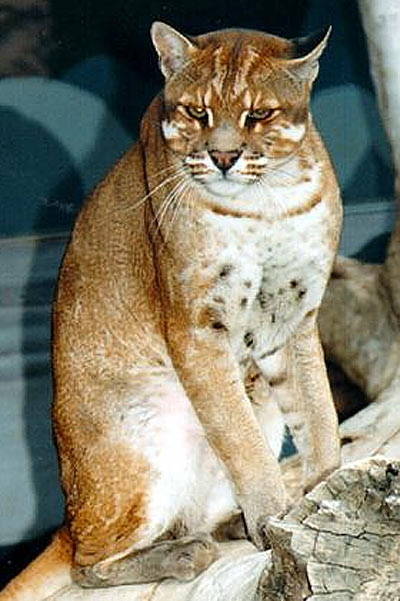Asian Golden Cat – Widespread but Threatened Southeast Asian Cat
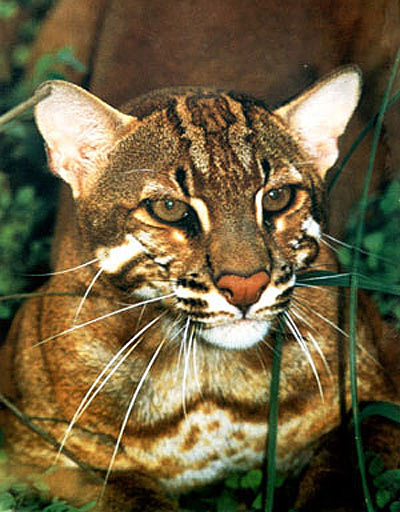
The Asian Golden Cat, also known as Temminck’s Golden Cat (named for Cooenrad Jaccob Temminck, the Dutch zoologist who first described the similar African Golden Cat in 1827), can be found throughout Southeast Asia; ranging from Tibet, Nepal, Bhutan, India and Bangladesh, Southern China, Myanmar, Thailand, Laos, Cambodia, Vietnam, Malaysia and Sumatra. The cat prefers dry deciduous forests, subtropical evergreen forest, and tropical rainforests where the environments offer them access to forest habitats that have the occasional rocky area. Asian golden cats can also be found at higher altitudes, as photos have been taken of them living almost 13,000 feet (3,960 m) above sea-level.
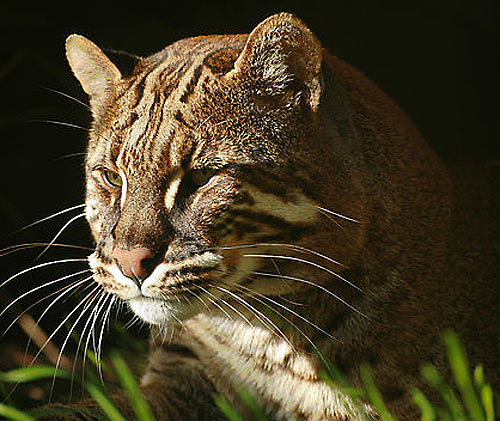
Although Asian golden cats resemble domestic cats in facial structure, they are much more heavily built. They have a body length of up to 41 inches (105 cm), and weigh up to 35 lbs (16 kg), which is roughly three times the size of a house cat. The coat tends to be of uniform color, but can range from red to golden brown, dark brown to pale cinnamon, gray to black, and even have stripes or spots.
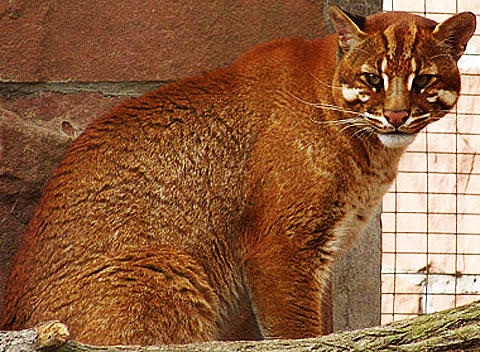
Originally believed to be nocturnal, the Asian golden cat is actually most active from dawn until dusk, and will often sleep during the night time hours. They are also both territorial and solitary, marking territories that have been observed to be as large as 18.4 square miles (47.7 sq. km). Like domestic cats, they have the ability to climb trees, and will do so when hunting birds, rodents, and reptiles; they are also known to hunt muntjacs, small sambar deer, water buffalo calves, and ghoral.
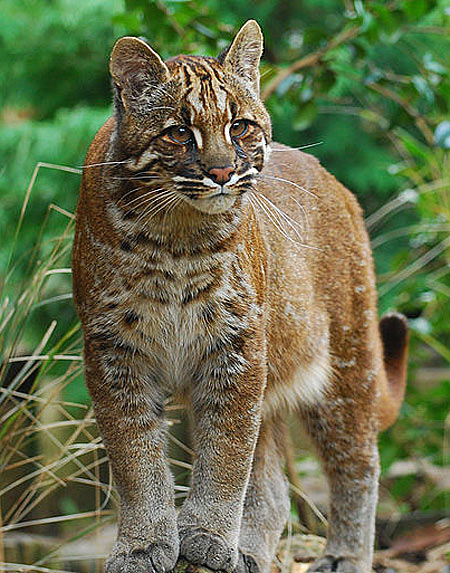
Asian golden cats are capable of vocalizations such as hissing, spitting, meowing, purring, growling, and gurgling, and will use them to communicate along with scent marking, urine spraying, raking trees and logs with their claws, and the rubbing of their heads against objects or each other. Unfortunately, they are classified as “near threatened” and must be protected if their species is to continue on.
